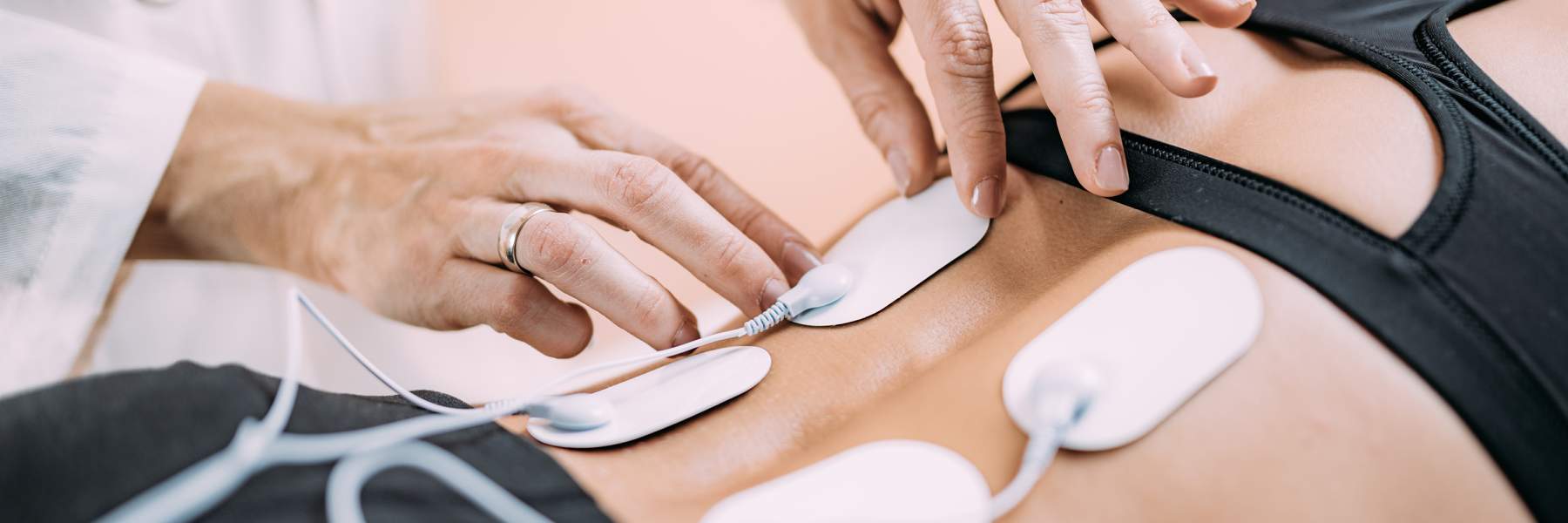Transcutaneous Electrical Nerve Stimulation (TENS) can be very effective in managing pain.
A TENS machine is a small battery-powered device with leads that are attached to sticky electrodes that you place on your skin. When turned on, it sends small, comfortable, electrical impulses through the skin. The feeling is like pins and needles or a tingly sensation.
TENS works by causing your body to release natural painkillers called endorphins. Research has shown that people with endometriosis using a TENS machine at home for pain relief don't need to use as much medication. TENS can also help increase the length of time your pain is reduced. This can be very empowering, allowing you to be more in control of how you manage your symptoms. It can also improve your quality of life and allow you to do the things you enjoy without pain.

How to choose an appropriate TENS machine
A number of machines designed specifically for period pain are available that are also suitable for helping to manage the pain experienced with endometriosis anytime, not just with a period. You can also use any TENS machine that allows you to program the correct settings (see next section).
If you are buying a TENS machine, it is best to get one that lets you program settings yourself, rather than one that only has pre-set programs. This way you can use the machine to find what works best for you. Some machines are analogue and some are digital. You will generally find that a digital one will be easier to use.
Do not use TENS, if you have:
- a pacemaker (consult your doctor)
- broken skin or on an area with poor sensation
- epilepsy ( consult your doctor)
A pelvic physiotherapist can help you decide on a TENS machine and teach you how to use it.
What are the best settings to use?
TENS can be programmed as low or high frequency. Research studies looking at the settings that give the best pain relief for endometriosis symptoms have found that most people with endometriosis will find high frequency TENS more effective for pain reduction.
The most effective settings seem to be:
- 50 - 120Hz (frequency)
- 100uS (pulse width)
- Constant current (not stopping and starting)
- Intensity (mA) : You are in control of the intensity (tingly sensation) at all times. Keeping it to the strongest tingle you feel comfortable with will give the best pain relief.
How to set up and use your TENS machine
Where should I apply my TENS electrodes?
The short and simple answer to this is – wherever it works best for you!
There are several recommended places to try:
1. Around where you feel your pain.
2. One lead (with its two pads) at the sacrum (tail bone) and one lead with its two pads at mid spine (bra-strap level).
3. One lead (with its two pads) at the sacrum (tail bone) and one lead with its two pads above the pubic bone.
4. One lead with its two pads at mid spine (bra-strap level line) and one lead with its two pads above the pubic bone.
If your machine only has one lead with electrodes then any of the above places can be tried.
It is a good idea to try them all to see which gives you the best pain relief. You may find the position changes depending on where you are feeling the most pain at a given time.
Pelvic pain electrode placements
How often should I use my TENS machine?
TENS can be used as often as you like. Recommended use is for at least 20-30 minutes at a time to be effective but it can be used multiple times a day at the times that you are experiencing pain.
When used repeatedly, an increase in effect can be seen, as TENS is thought to help reduce the over-sensitivity of the nervous system. This can help lessen your pain over time.
 Skip to main content
Skip to main content